As always in our travels, food plays an integral role in our explorations. That was even more important on our recent trip to Cornwall because it was a walking tour, so needless to say we needed all of the energy we could get.
 A traditional Cornish breakfast starts out similar to our American version with eggs, fried potatoes, bacon, and sausage, but then veers off our usual fare by adding tomato, mushrooms, and black or hog’s pudding, which is a spicy mixture of pork, suet, bread, and oatmeal or pearl barley.
A traditional Cornish breakfast starts out similar to our American version with eggs, fried potatoes, bacon, and sausage, but then veers off our usual fare by adding tomato, mushrooms, and black or hog’s pudding, which is a spicy mixture of pork, suet, bread, and oatmeal or pearl barley.
Odd as some of that sounds, we grew to love it, and unlike the rest of England, it did not include beans. That was a plus in our book.
 We also found that fish dishes were often offered as an alternative morning meal, and in an attempt to avoid getting bogged down with the same breakfast every day we tried a couple of them. Often it was as simple as baked cod or salmon, but an Indian style curry dish of haddock, rice, parsley, hard-boiled eggs, and butter or cream called kedgeree was a happy discovery. Still, in our minds this may have fit better as a lunch.
We also found that fish dishes were often offered as an alternative morning meal, and in an attempt to avoid getting bogged down with the same breakfast every day we tried a couple of them. Often it was as simple as baked cod or salmon, but an Indian style curry dish of haddock, rice, parsley, hard-boiled eggs, and butter or cream called kedgeree was a happy discovery. Still, in our minds this may have fit better as a lunch.
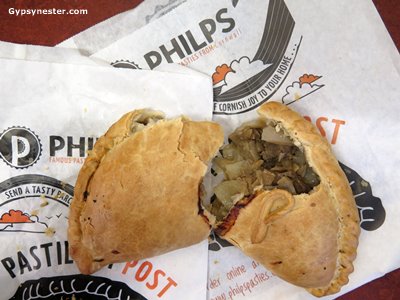 Speaking of lunch, a pasty, pronounced pass-tee, is the go to fast food in Cornwall, so much so that they have been given Protected Geographical Indication status. Traditional pasties consist of a sturdy crust filled with beef, potato, swede (also known as turnip in Cornwall) and onion. They are designed to be hand-held, as in hand to mouth.
Speaking of lunch, a pasty, pronounced pass-tee, is the go to fast food in Cornwall, so much so that they have been given Protected Geographical Indication status. Traditional pasties consist of a sturdy crust filled with beef, potato, swede (also known as turnip in Cornwall) and onion. They are designed to be hand-held, as in hand to mouth.
 We first encountered these delicious pies in the U.P. of Michigan several years ago, and learned that they were brought there by Cornish miners back in the 1800s. The origins of the pasty in Europe are unclear, but there are many mentions of similar turnovers going back centuries. No doubt Cornish bakers were not the first to think of stuffing meat and potatoes into a crust, but they certainly perfected it.
We first encountered these delicious pies in the U.P. of Michigan several years ago, and learned that they were brought there by Cornish miners back in the 1800s. The origins of the pasty in Europe are unclear, but there are many mentions of similar turnovers going back centuries. No doubt Cornish bakers were not the first to think of stuffing meat and potatoes into a crust, but they certainly perfected it.
 Another quick bite is the classic pork pie. If it sounds like we’re saying we’d eat our hat it’s because the shape of these little meat pies is how the chapeau got its name. They are generally served cold, like revenge, and not particularly unique to Cornwall, but we had to try one.
Another quick bite is the classic pork pie. If it sounds like we’re saying we’d eat our hat it’s because the shape of these little meat pies is how the chapeau got its name. They are generally served cold, like revenge, and not particularly unique to Cornwall, but we had to try one.
For an afternoon pick me up, cream tea is just the ticket. This is true across the U.K., but in the Cornish version the scone is first slathered with strawberry jam, then topped with clotted cream, which is backwards from the process that originated in Devon.

Although the debate about the order of application for the jam and clotted cream on a scone may never be resolved, cream teas are served and enjoyed both cream first and jam first throughout the kingdom.
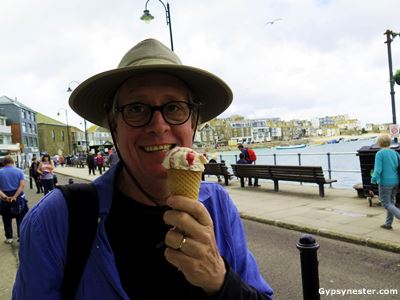 Ice cream is also an enormously popular afternoon snack, especially near the beach. Cornwall is renowned for its dairy products and with one lick of a cone we knew why. The secret is that the confection is created using Cornish clotted cream, which makes for a much richer flavor and creamier consistency. We may never look at ice cream the same way again.
Ice cream is also an enormously popular afternoon snack, especially near the beach. Cornwall is renowned for its dairy products and with one lick of a cone we knew why. The secret is that the confection is created using Cornish clotted cream, which makes for a much richer flavor and creamier consistency. We may never look at ice cream the same way again.
A Cornish dinner is a varied affair, as with most everywhere, but seafood is often the star of the show. We were lucky enough to experience this at one of the premier restaurants in the region, Rick Stein’s The Seafood Restaurant in Padstow, feasting on fresh scallops and lobster.
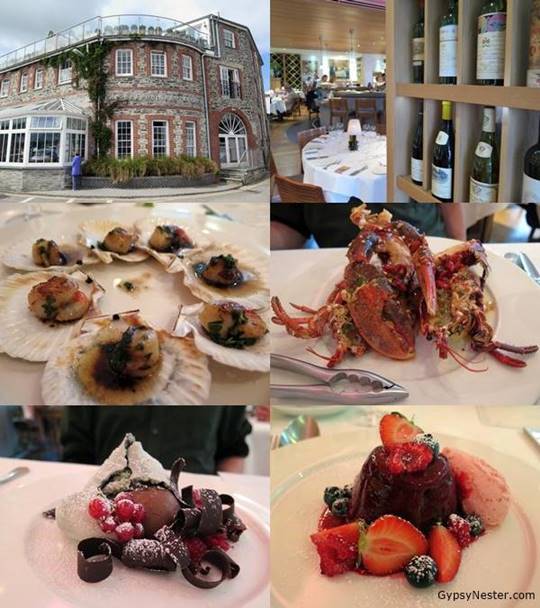 Afterwards we were treated to spectacular desserts featuring fresh berries, chocolate, and more of the incredible cream that Cornwall is famous for.
Afterwards we were treated to spectacular desserts featuring fresh berries, chocolate, and more of the incredible cream that Cornwall is famous for.
 In addition to the bounty from the sea, Cornish food directly reflects the area’s agriculture, so lamb, potatoes, barley, peas, and cabbage are all quite common, and on our last evening we found them all together in a sumptuous stew.
In addition to the bounty from the sea, Cornish food directly reflects the area’s agriculture, so lamb, potatoes, barley, peas, and cabbage are all quite common, and on our last evening we found them all together in a sumptuous stew.
Certainly nothing fancy, but perhaps the best meal of the trip and a great way to finish.
See more from our Cornwall walking tour here.
See all of our adventures in England.
A big thank you to Country Walkers for providing this adventure, as always, all opinions are our own.
David & Veronica, GypsyNester.com


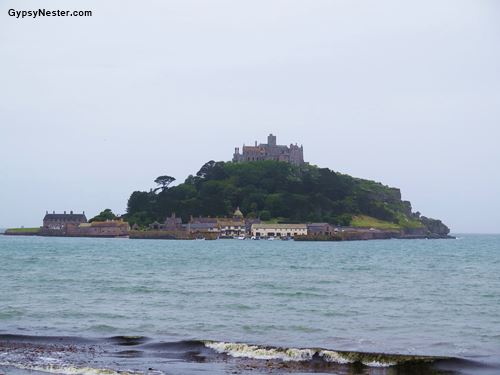
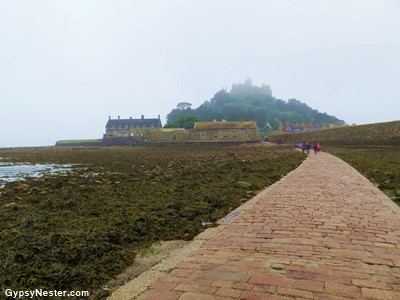 The mount has been the site of legends and lore, as well as a prized piece of real estate, for thousands of years.
The mount has been the site of legends and lore, as well as a prized piece of real estate, for thousands of years.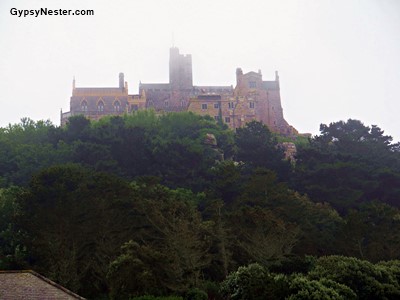
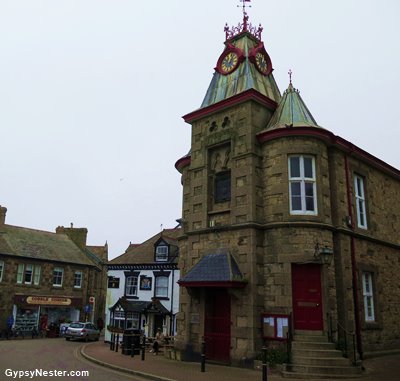
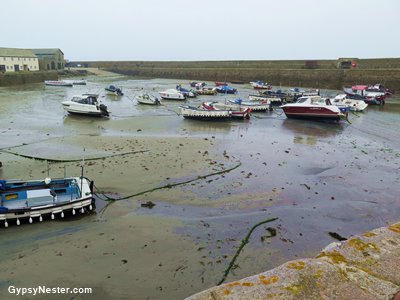 Disappointed that we would not be able to climb to the top, we made the best of it and found that there was a lot to be discovered down at the base of the hill.
Disappointed that we would not be able to climb to the top, we made the best of it and found that there was a lot to be discovered down at the base of the hill.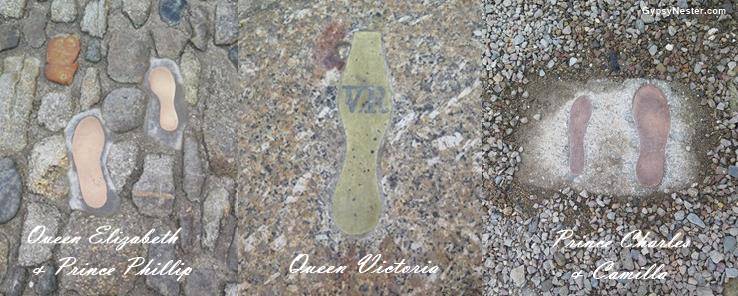 Up near the walkway entrance we discovered that Queen Elizabeth & Prince Philip, as well as Prince Charles & Camilla, also have their footprints immortalized in metal.
Up near the walkway entrance we discovered that Queen Elizabeth & Prince Philip, as well as Prince Charles & Camilla, also have their footprints immortalized in metal.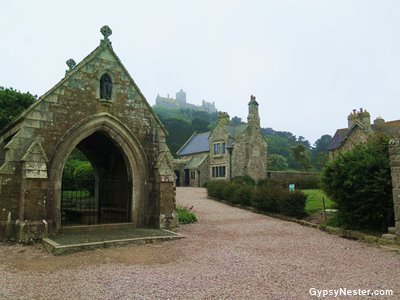 A little village is clustered around the waterfront, so we walked the cobblestone streets up and down… both of them. It didn’t take long, especially since it was Saturday and none of the island’s handful of shops or cafes were open.
A little village is clustered around the waterfront, so we walked the cobblestone streets up and down… both of them. It didn’t take long, especially since it was Saturday and none of the island’s handful of shops or cafes were open.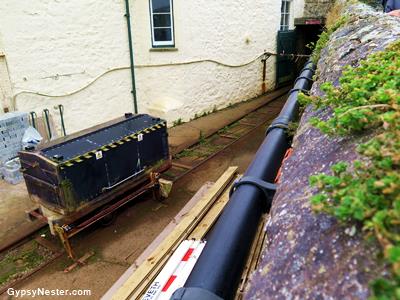 The single car looks a bit like a coffin on wheels and dates back to Victorian times. For some reason, they chose to dig a tunnel instead of going overland, so it makes the entire trip underground.
The single car looks a bit like a coffin on wheels and dates back to Victorian times. For some reason, they chose to dig a tunnel instead of going overland, so it makes the entire trip underground. At the end of the road we found a lychgate leading to the parish cemetery. The misty gray day seemed perfectly fitting for the scene of moss covered headstones and Cornish Crosses.
At the end of the road we found a lychgate leading to the parish cemetery. The misty gray day seemed perfectly fitting for the scene of moss covered headstones and Cornish Crosses.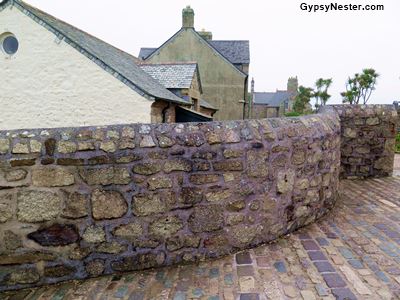
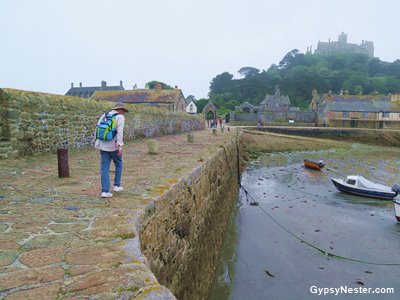
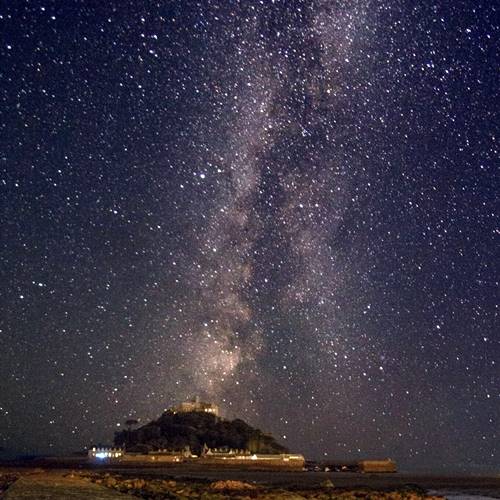
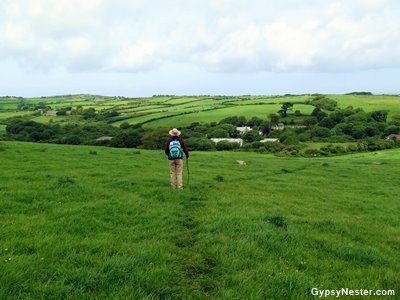
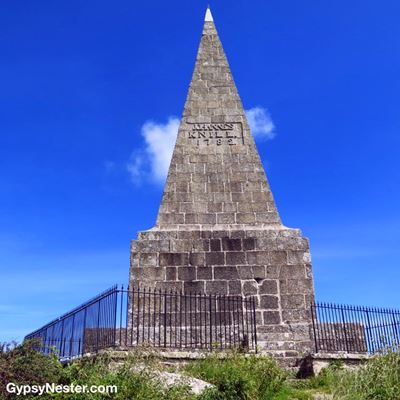 We set out from Cardis Bay and climbed about a mile to the first landmark along the way, Knill’s Steeple. This 50ft granite obelisk is a self-styled tribute that John Knill, the eccentric mayor of St Ives, built to himself back in 1782.
We set out from Cardis Bay and climbed about a mile to the first landmark along the way, Knill’s Steeple. This 50ft granite obelisk is a self-styled tribute that John Knill, the eccentric mayor of St Ives, built to himself back in 1782.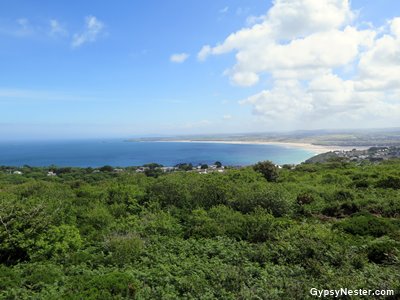
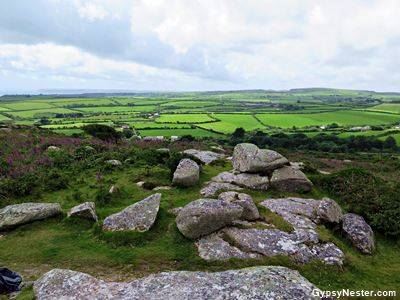 We continued upward on our way to the top of Cornwall, Trencrom Hill, the only place in the county where both coasts are visible, the Celtic Sea on our north to the English Channel on the south.
We continued upward on our way to the top of Cornwall, Trencrom Hill, the only place in the county where both coasts are visible, the Celtic Sea on our north to the English Channel on the south.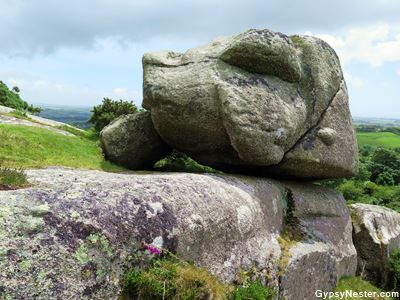 The hill was also said to home to the giant Trecobben, which explains the preponderance of boulders strewn about the area.
The hill was also said to home to the giant Trecobben, which explains the preponderance of boulders strewn about the area.
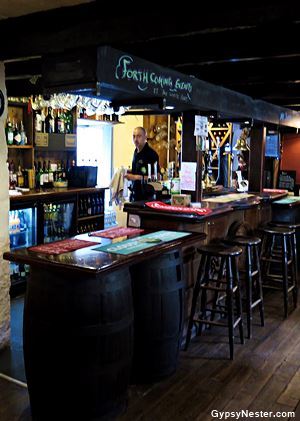
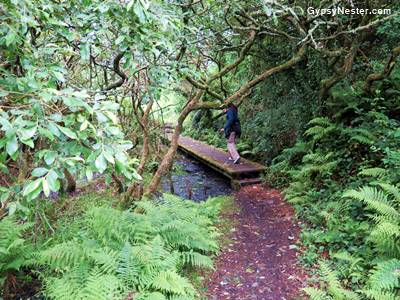 All that lay between us and our destination at that point was the Marazion Marsh, so we waded in. This nature reserve has one of Cornwall’s largest reed beds and is an important refuge for breeding and migrating birds.
All that lay between us and our destination at that point was the Marazion Marsh, so we waded in. This nature reserve has one of Cornwall’s largest reed beds and is an important refuge for breeding and migrating birds.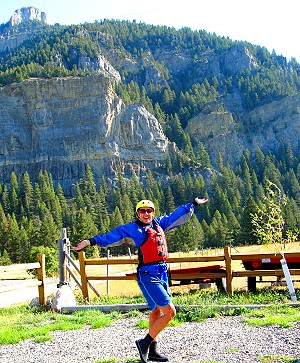

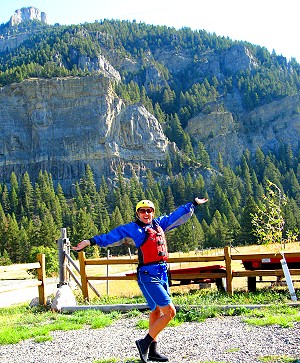
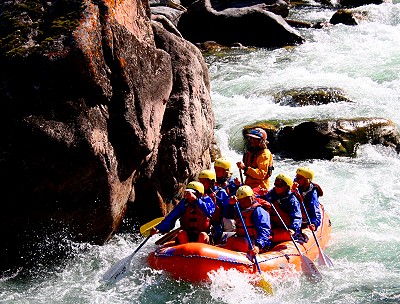
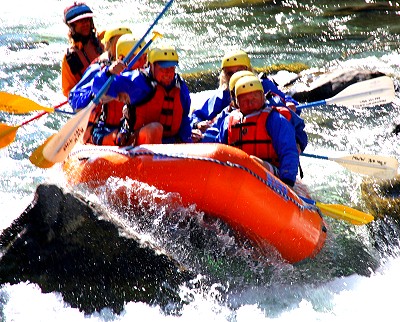
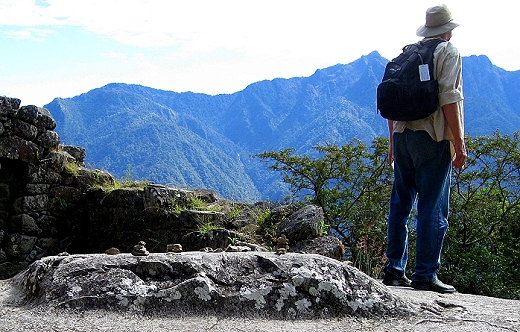
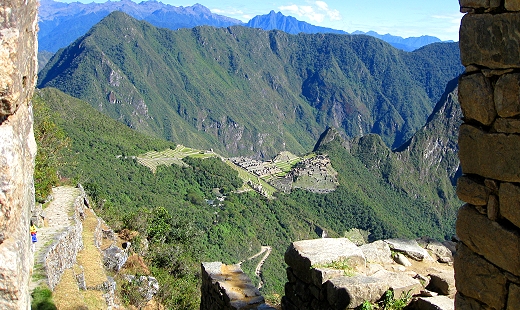
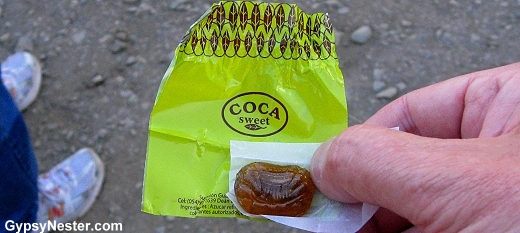
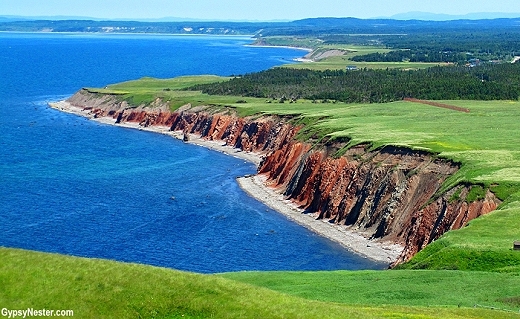
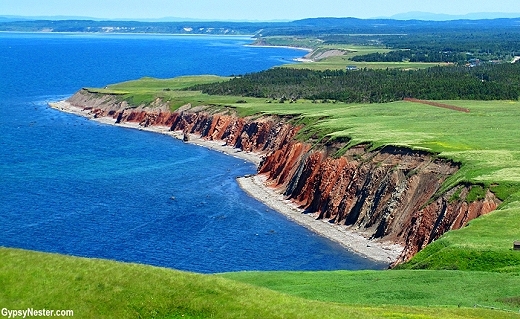
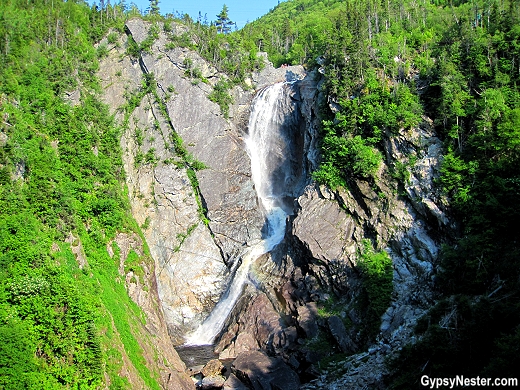
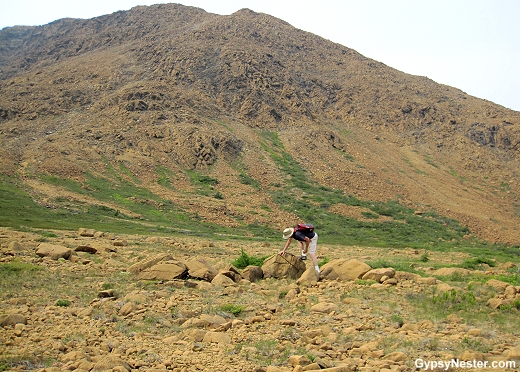
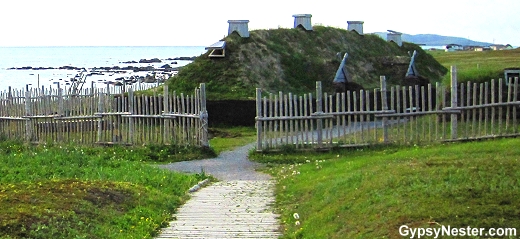
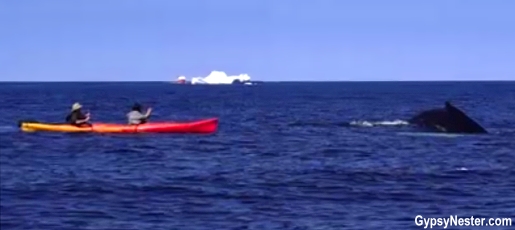
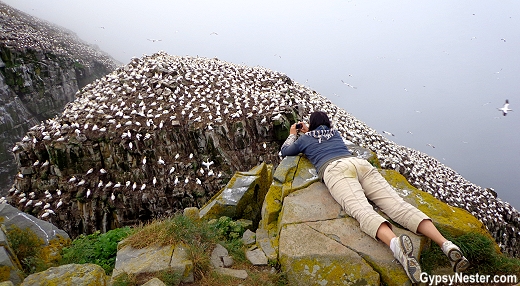
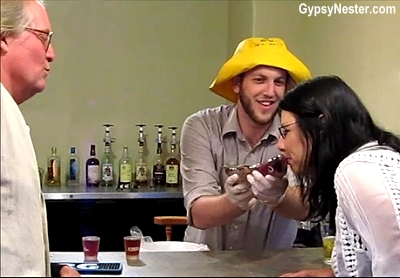
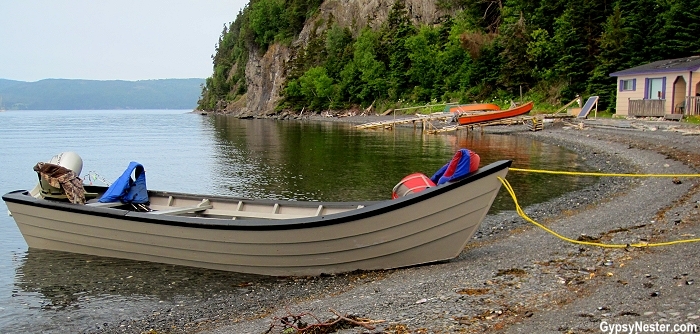
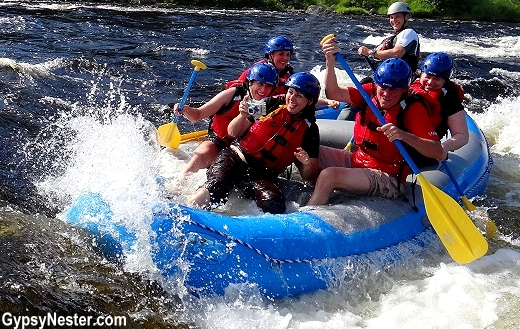
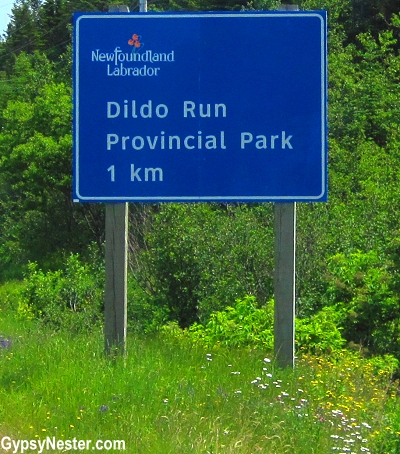
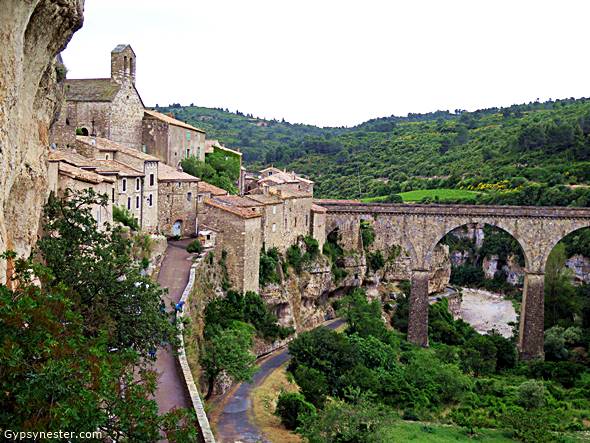
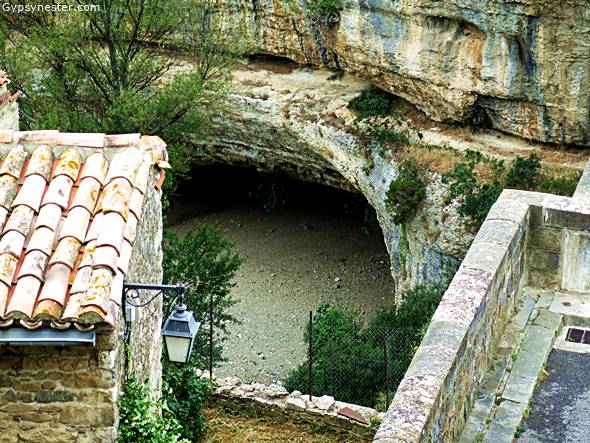 But before we found out about that failure we were wildly impressed with the fortifications. Most of the defenses are natural, left behind when water eroded the local limestone into a formidable castle-like formation that certainly looks impenetrable. With a little additional stone work the original inhabitants no doubt felt pretty safe a thousand years ago.
But before we found out about that failure we were wildly impressed with the fortifications. Most of the defenses are natural, left behind when water eroded the local limestone into a formidable castle-like formation that certainly looks impenetrable. With a little additional stone work the original inhabitants no doubt felt pretty safe a thousand years ago.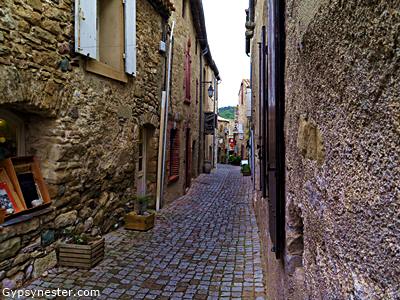 Once inside, we were also thrilled by the fact that we had the narrow medieval lanes almost all to ourselves while we explored. It was about that time that Antoine, our guide for the
Once inside, we were also thrilled by the fact that we had the narrow medieval lanes almost all to ourselves while we explored. It was about that time that Antoine, our guide for the 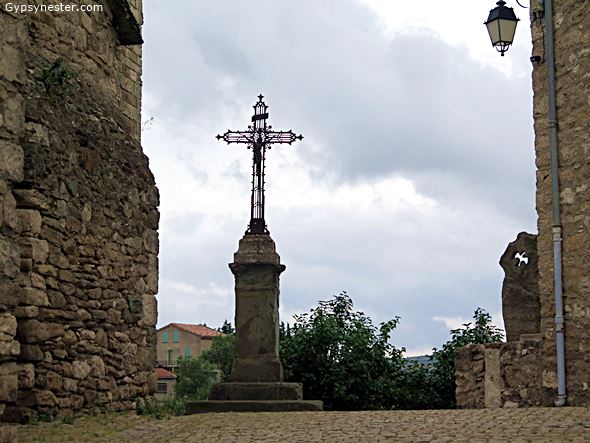
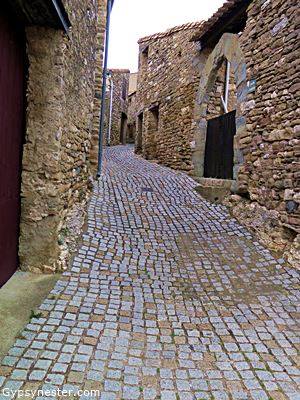 Once the Crusaders cleared the harmless Gnostics from the nearby cities of Béziers and
Once the Crusaders cleared the harmless Gnostics from the nearby cities of Béziers and 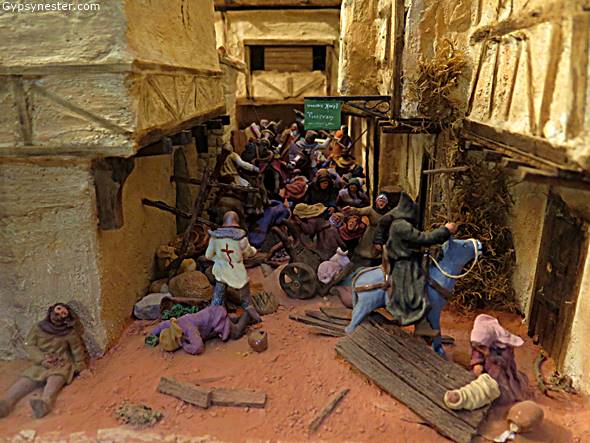 Each scene was accompanied by a detailed description in one of the booklets provided available in a dozen different languages. At first the whole set up struck us as very odd, even a bit off base for such serious subject matter, but within a few minutes we were completely engrossed and the story was forever imprinted in our memories.
Each scene was accompanied by a detailed description in one of the booklets provided available in a dozen different languages. At first the whole set up struck us as very odd, even a bit off base for such serious subject matter, but within a few minutes we were completely engrossed and the story was forever imprinted in our memories.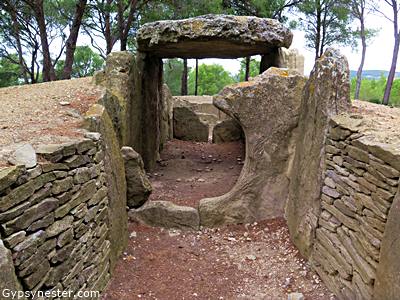 At the top we found a few isolated megalithic burial stones, dolmens left behind by the Celts who lived here thousands of years ago, well before the time of Christ. These were kin to the people who made
At the top we found a few isolated megalithic burial stones, dolmens left behind by the Celts who lived here thousands of years ago, well before the time of Christ. These were kin to the people who made 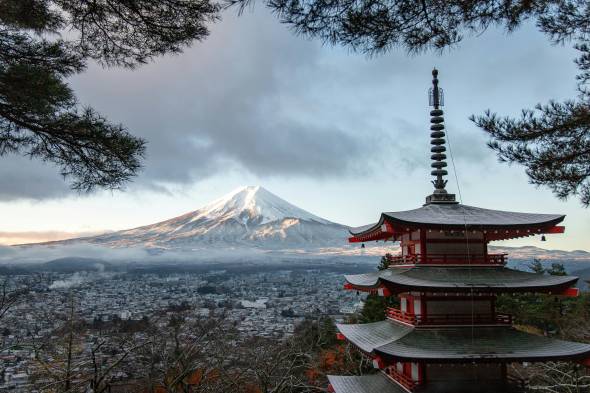

 The first time we visited we were lucky enough to see Japan in the Spring, which is arguably the best time because the famous cherry blossoms are in bloom. There are also a bunch of festivals, running from late March to early May, that coincide with the blossoms depending on whether they are in the northern or southern part of the islands.
The first time we visited we were lucky enough to see Japan in the Spring, which is arguably the best time because the famous cherry blossoms are in bloom. There are also a bunch of festivals, running from late March to early May, that coincide with the blossoms depending on whether they are in the northern or southern part of the islands.
 However, the railway system is fast, reliable, extremely efficient, and covers almost all of the country, so it is travel choice for most visitors. There is also a good bus system that is more economical than the trains, but takes much longer to get from one place to another.
However, the railway system is fast, reliable, extremely efficient, and covers almost all of the country, so it is travel choice for most visitors. There is also a good bus system that is more economical than the trains, but takes much longer to get from one place to another.